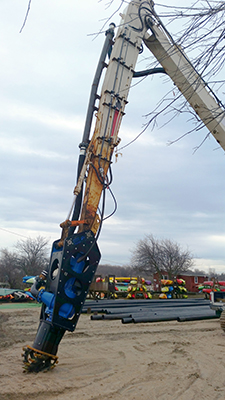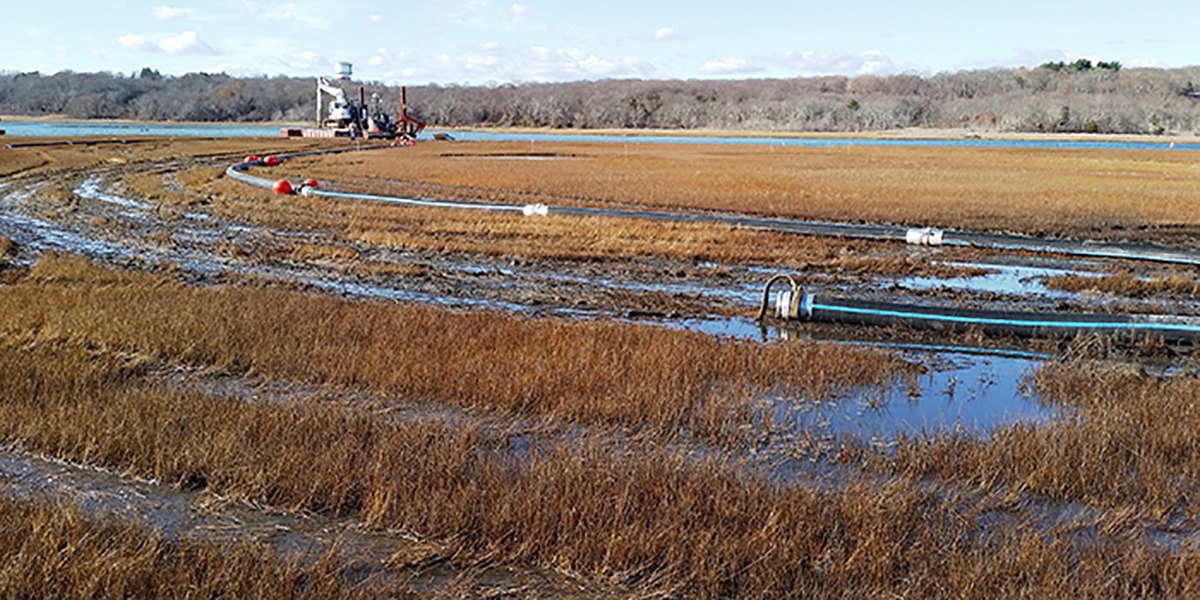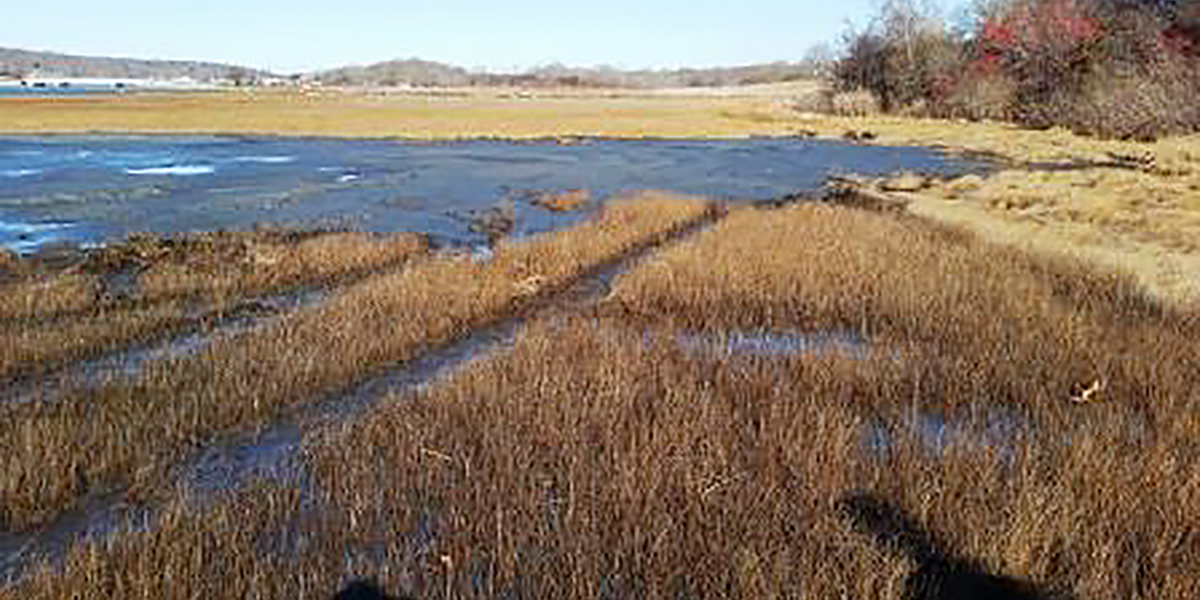
RI Coastal Resources Management Council
...to preserve, protect, develop, and restore coastal resources for all Rhode Islanders

...to preserve, protect, develop, and restore coastal resources for all Rhode Islanders
Update on salt marsh restoration at Narrow River
December 8, 2016, SOUTH KINGSTOWN – Work has been ongoing for about a week (since December 1) along the Narrow River as part of the salt marsh restoration and elevation pilot project. Contractor Patriot Marine has been dredging down near Sedge Island.

Low-flow dredge being used in the project
The crew is approximately one-third of the way dredging one of the sections planned for this area, though work was halted unexpectedly on Monday, Dec. 5 because of mechanical issues. Work resumed later in the week, once the new piece arrived. Patriot Marine has been working long hours since beginning, and dredging and production is going as expected. The red ramshackle shack visible from Sprague Bridge has also been removed due to public safety concerns.
Why restore the marsh by elevating it?
There are currently many areas of the marsh where ponded water stays on the surface, even at low tide, drowning vegetation and providing areas for mosquitos to breed. This is thought to be the result of sea level rise, which is happening at an increasingly faster rate due to climate change. Marshes with healthy vegetation are better able to accumulate sediments and build elevation to keep up with rising sea levels. However, recent evidence suggests that most of the marshes in Rhode Island are not keeping pace with sea level rise and drowning.
If the marsh disappears, the important “ecological services” it provides are also lost. Among many other functions, marshes are important habitat for fish and wildlife. To combat drowning, and to hopefully increase the lifespan and resilience of the marsh to future sea level rise and other stressors, the CRMC and its partners aims to restore and elevate the marsh surface.
One method of restoration involves placing dredged material on the surface of the marsh to raise the elevation so that plants can thrive. This method, often called thin layer deposition, will be used in the Narrow River. Material will be dredged from select locations to create depths where eelgrass—another important habitat—can grow. The dredged materials will then be dispersed on the adjacent marsh surface to slightly increase the marsh’s elevation, primarily in areas where the vegetation has died off or become stressed from prolonged flooding. These areas will be replanted with marsh grasses.
From Narrow River Kayaks south to Sedge Island, crews are depositing material from the river onto different areas of the marsh. The dredge footprint creates an approximately 65-foot wide channel in the river. Sand from the river is being used to help elevate the marshes on the eastern side.
A new low-flow method of dredging is being used to protect the existing marsh plants. Marine dredging is only permitted in the fall and winter months to avoid impacts to fish species such as flounder.
How it will look
The dredge equipment is currently mounted on barges in the river. Discharge pipes extend from the dredge onto the marsh to the east, and construction equipment is on the marsh to spread and grade the sand that is pumped from the river. The work progressing from south to north, starting at Sedge Island, just before Sprague Bridge, and ending just south of Middle Bridge. For the duration of the project, access through this stretch of Narrow River will require mariners to exercise caution and listen to the direction of dredge crews for safe passage.

Barge with dredge, as well as the lengths of pipe pumping the material from the river onto the sinking areas of the marsh.

One area of the restoration areas on the Narrow River salt marsh.